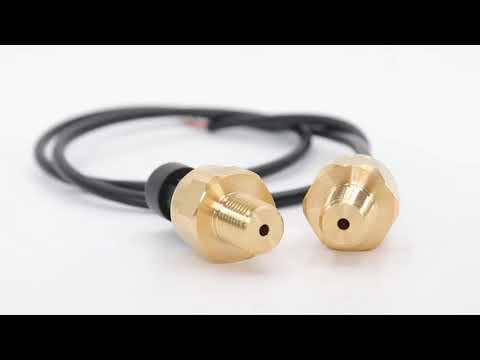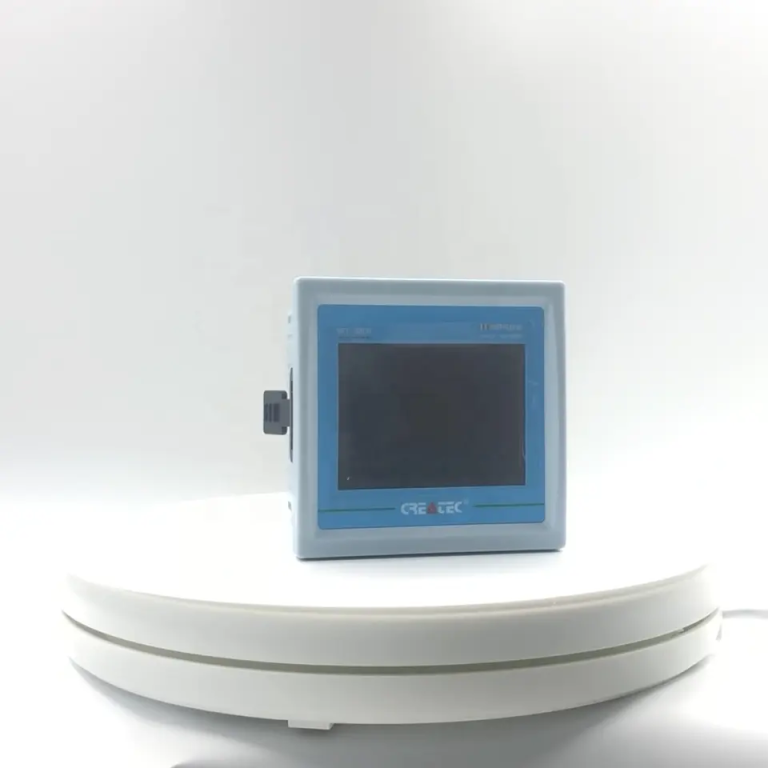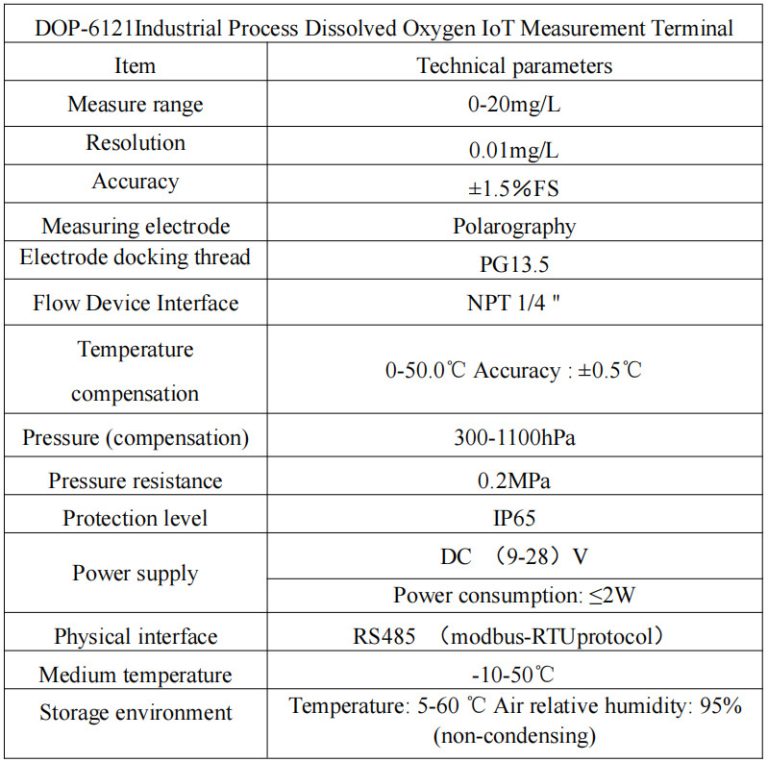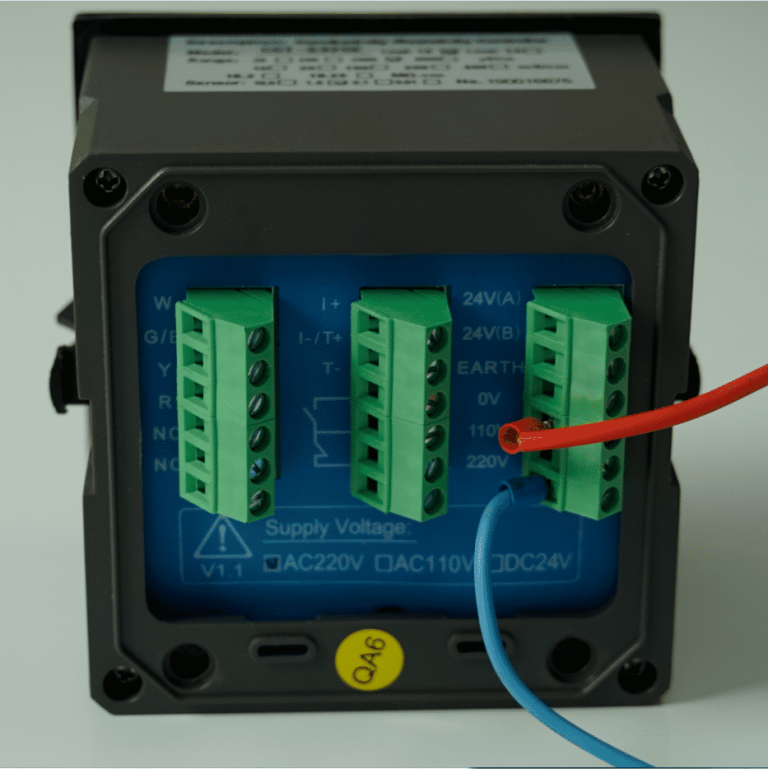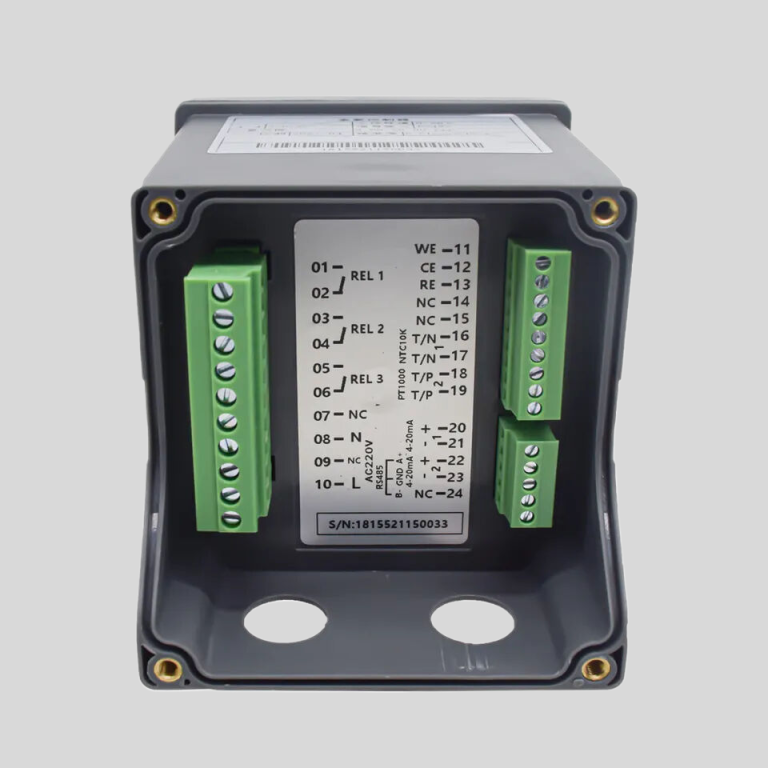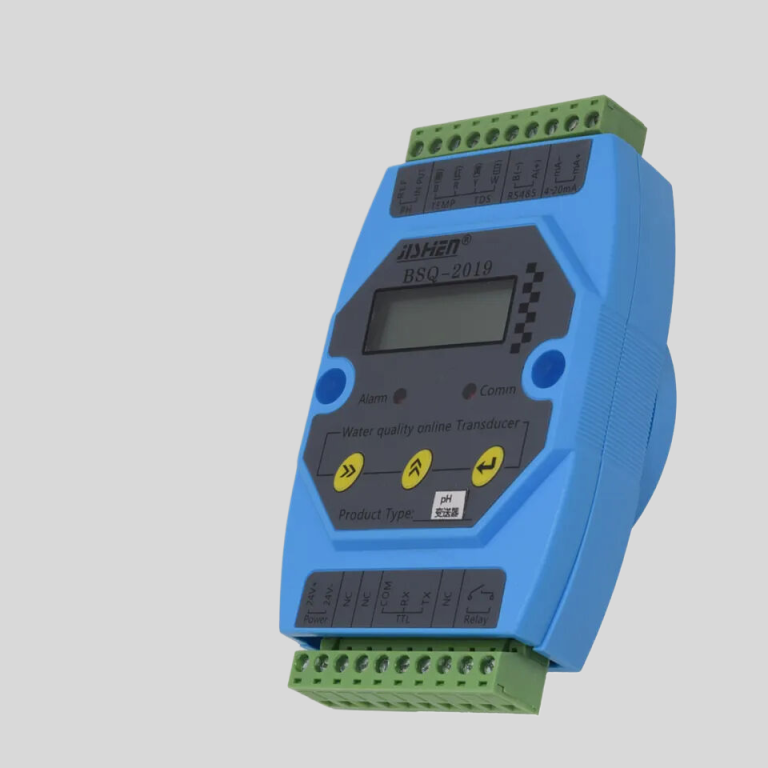Table of Contents
Benefits of Using Electrical Conductivity Instruments in Water Quality Monitoring
Water quality monitoring is a crucial aspect of ensuring the safety and health of our environment. One key parameter that is often measured in water quality monitoring is electrical conductivity. Electrical conductivity is a measure of a water sample’s ability to conduct an electrical current, which is influenced by the presence of dissolved ions such as salts and minerals. In order to accurately measure electrical conductivity in water samples, specialized instruments known as electrical conductivity instruments are used.
Electrical conductivity instruments are designed to provide accurate and reliable measurements of electrical conductivity in water samples. These instruments typically consist of a probe that is immersed in the water sample, which measures the conductivity of the sample and converts it into a readable value. The data collected by these instruments can provide valuable insights into the quality of the water being tested.
One of the key benefits of using electrical conductivity instruments in water quality monitoring is their ability to provide real-time data. By continuously monitoring the electrical conductivity of water samples, these instruments can quickly detect any changes in water quality that may indicate contamination or other issues. This real-time data can help water quality professionals to quickly identify and address any potential problems, ensuring the safety of the water supply.
| Model | pH/ORP-3500 pH/orp meter |
| Range | pH:0.00~14.00 ; ORP: (-2000~+2000)mV; Temp.:(0.0~99.9)°C (Temp.Compensation: NTC10K) |
| Resolution | pH:0.01 ; ORP: 1mV; Temp.:0.1°C |
| Accuracy | pH:+/-0.1 ; ORP: +/-5mV(electronic unit); Temp.: +/-0.5°C |
| Temp. compensation | Range: (0~120)°C; element: Pt1000 |
| Buffer Solution | 9.18; 6.86; 4.01; 10.00; 7.00; 4.00 |
| Medium Temp. | (0~50)°C (with 25°C as standard) manual/automatic temp. compensation for selection |
| Analog output | Isolated one Channel(4~20)mA, Instrument/Transmitter for selection |
| Control Output | Double relay output (single contact ON/OFF) |
| Working Environment | Temp.(0~50)℃; relative humidity <95%RH (non-condensing) |
| Storage Environment | Temp.(-20~60)℃;Relative Humidity ≤85%RH (none condensation) |
| Power Supply | DC 24V; AC 110V; AC220V |
| Power consumption | <3W |
| Dimension | 48mmx96mmx80mm(HxWxD) |
| Hole Size | 44mmx92mm(HxW) |
| Installation | Panel mounted, fast installation |
In addition to providing real-time data, electrical conductivity instruments are also highly accurate. These instruments are calibrated to provide precise measurements of electrical conductivity, allowing for reliable and consistent results. This accuracy is essential in water quality monitoring, as even small changes in conductivity can indicate significant changes in water quality.
Furthermore, electrical conductivity instruments are easy to use and require minimal training to operate. This makes them accessible to a wide range of users, from water quality professionals to community members participating in citizen science projects. The simplicity of these instruments allows for widespread use in water quality monitoring efforts, helping to increase the amount of data available for analysis.
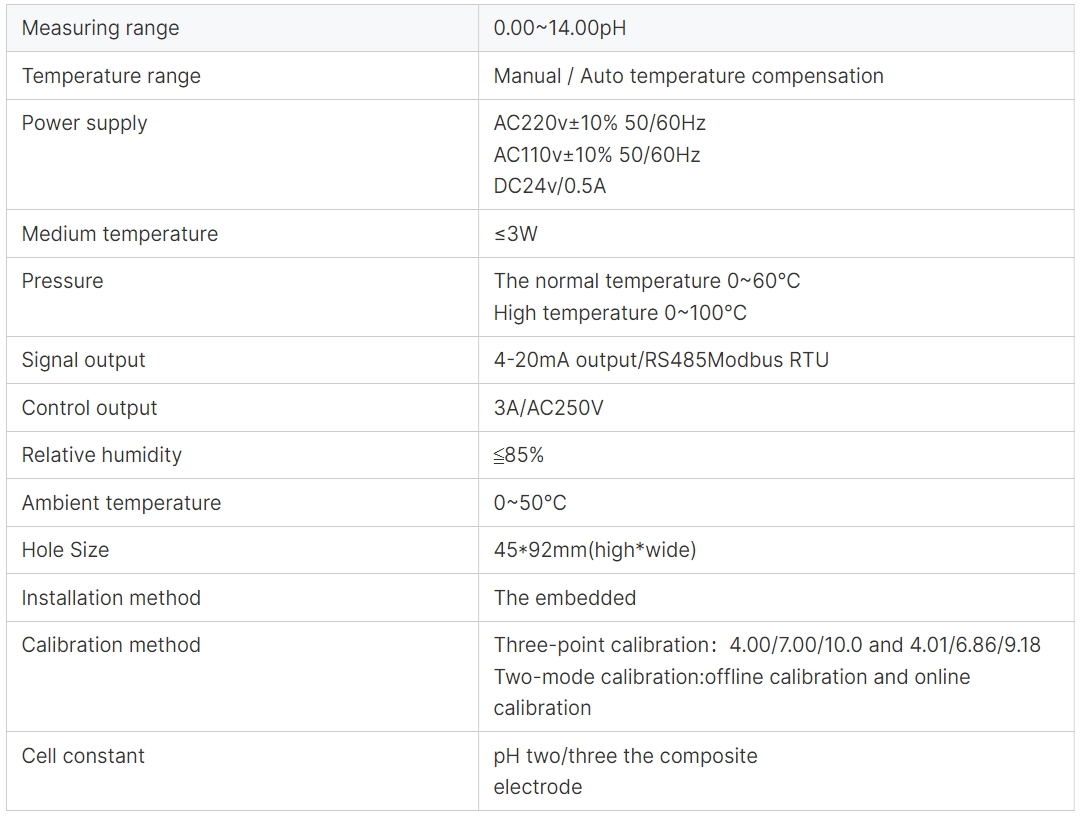
Another benefit of using electrical conductivity instruments in water quality monitoring is their versatility. These instruments can be used to measure conductivity in a wide range of water samples, from freshwater lakes and rivers to saltwater estuaries and coastal areas. This versatility allows for comprehensive monitoring of water quality across different environments, providing a more complete picture of overall water quality.
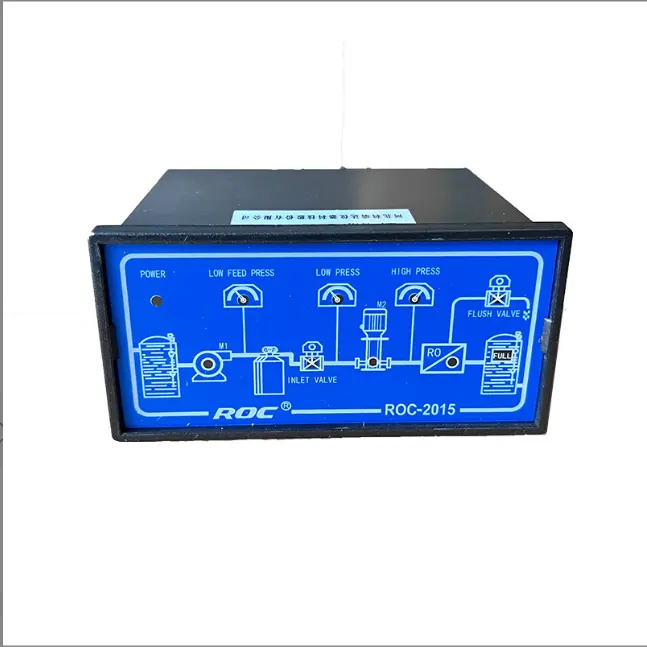
In conclusion, electrical conductivity instruments play a vital role in water quality monitoring efforts. These instruments provide real-time, accurate, and reliable data on the electrical conductivity of water samples, helping to identify potential issues and ensure the safety of our water supply. Their ease of use and versatility make them valuable tools for a wide range of users, from professionals to community members. By incorporating electrical conductivity instruments into water quality monitoring programs, we can work towards protecting and preserving our water resources for future generations.
How to Choose the Right electrical conductivity instrument for Your Application
Electrical conductivity instruments are essential tools used in a variety of industries, including agriculture, environmental monitoring, and water treatment. These instruments measure the ability of a substance to conduct an electric current, providing valuable information about the concentration of ions in a solution. When choosing the right electrical conductivity instrument for your application, there are several factors to consider to ensure accurate and reliable measurements.
One of the first things to consider when selecting an electrical conductivity instrument is the range of conductivity values that you will be measuring. Different instruments are designed to measure a specific range of conductivity, so it is important to choose one that is suitable for your application. For example, if you are measuring the conductivity of pure water, you will need an instrument with a high level of sensitivity to detect small changes in conductivity. On the other hand, if you are measuring the conductivity of a highly concentrated solution, you will need an instrument with a wider range to accommodate the higher conductivity values.
Another important factor to consider is the accuracy and precision of the instrument. The accuracy of an electrical conductivity instrument refers to how close the measured value is to the true value, while precision refers to the consistency of measurements. It is important to choose an instrument that provides both high accuracy and precision to ensure reliable results. Look for instruments that have been calibrated and tested for accuracy, and consider the resolution of the instrument, which determines the smallest change in conductivity that can be detected.
The type of electrodes used in the instrument is also an important consideration. There are several types of electrodes available, including glass, platinum, and stainless steel, each with its own advantages and disadvantages. Glass electrodes are commonly used for measuring the conductivity of pure water, as they are resistant to contamination and provide accurate measurements. Platinum electrodes are more durable and can withstand harsh environments, making them suitable for industrial applications. Stainless steel electrodes are cost-effective and versatile, making them a popular choice for general-purpose conductivity measurements.
In addition to the range, accuracy, precision, and electrodes, it is important to consider the features and capabilities of the instrument. Some instruments come with built-in temperature compensation, which adjusts the conductivity measurements based on changes in temperature to provide more accurate results. Others may have data logging capabilities, allowing you to store and analyze conductivity measurements over time. Consider the specific requirements of your application and choose an instrument that meets your needs.
| Controller type | ROC-7000 Single-stage/Double-stage Reverse osmosis control integrated system | |||||
| Cell constant | 0.1cm-1 | 1.0 cm-1 | 10.0cm-1 | |||
| Conductivity measurement parameters | Raw water conductivity | (0~2000) | (0~20000) | |||
| Primary conductivity | (0~200) | (0~2000) | ||||
| Secondary conductivity | (0~200) | (0~2000) | ||||
| Temperature compensation | Automatic compensation on the basis of 25 ℃ ,compensation range(0~50)℃ | |||||
| Accuracy | Matched precision:1.5 level | |||||
| Flow measurement range | Instantaneous flow | (0~999)m3/h | ||||
| Accumulative flow | (0~9999999)m3 | |||||
| pH | Measurement range | 2-12 | ||||
| measurement parameters | Accuracy | ±0.1pH | ||||
| Temperature compensation | Automatic compensation on the basis of 25 ℃ ,compensation range(0~50)℃ | |||||
| DI acquisition | Input signal | Low pressure switch of Tap water,high level of pure water tank, low level of pure water tank, low pressure switch before the pump, high pressure switch after the primary booster pump,high level of secondary pure water tank, low level of secondary pure water tank,high pressure switch after the secondary booster pump | ||||
| Signal Type | Passive switch contact | |||||
| DO Control | Control output | Inlet valve, primary flush valve, primary drain valve, antiscalant pump, raw water pump, primary booster pump, secondary booster pump, secondary flush valve, secondary drain valve, pH adjustment metering pump. | ||||
| Electrical contact | Relay(ON/OFF) | |||||
| Load capacity | 3A(AC 250V)~ 3A(DC 30V) | |||||
| Display screen | Screen color:TFT;resolution:800×480 | |||||
| Working power | Working power | DC 24V±4V | ||||
| Power consumption | ≤6.0W | |||||
| Working environment | Temperature:(0~50)℃;Relative humidity:≤85%RH(non condensation) | |||||
| Storage environment | Temperature:(-20~60)℃;Relative humidity:≤85%RH(non condensation) | |||||
| Installation | Panel mounted | Hole(Length×Width,192mm×137mm) | ||||
When selecting an electrical conductivity instrument, it is also important to consider the ease of use and maintenance. Look for instruments that are user-friendly and easy to calibrate, with clear instructions for operation. Consider the durability and reliability of the instrument, as well as the availability of technical support and replacement parts. Regular maintenance and calibration are essential to ensure accurate measurements, so choose an instrument that is easy to maintain and service.
In conclusion, choosing the right electrical conductivity instrument for your application requires careful consideration of factors such as range, accuracy, precision, electrodes, features, ease of use, and maintenance. By selecting an instrument that meets your specific requirements and provides accurate and reliable measurements, you can ensure the success of your conductivity measurements and achieve optimal results in your industry.

